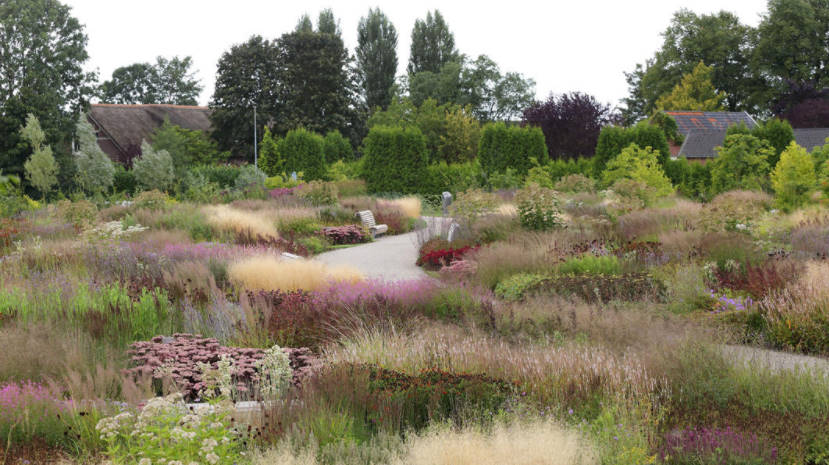
- The beginning of the path;
- The main provisions of the concept of the garden;
- 1. First of all, work with forms of plants should be carried out;
- 2. The garden should be beautiful all year round;
- 3. The rule of “70 to 30»;
- 4. The rule of the “pie»;
- 5. Plants are planted by levels;
- 6. Colors in the garden should not only be bright and ” tasty»;
- 7. There is nothing wrong with the collision of nature and the metropolis;
For the advice of this person on the arrangement of the garden lined up in long queues, customers seek to “get” it in their hands throughout Europe and America.
This Is Piet Rudolph! The chief ideologist of horticulture new wave style Naturgarden, whose concepts were broken fashionable gardens in London, Bonn, Rotterdam, Barcelona, new York and Venice.
The beginning of the path
Piet Oudolf was born in 1944 in the province of North Holland, in the city of Haarlem. Whom he has not worked in his youth a sailor, a bartender, salesman, waiter and even a steelworker. As can be understood from this “” list, the future designer was not inclined to gardening. The change of professional guidelines was purely accidental. The Rudolph took a job as a laborer in a plant nursery. At the time he was 26 years old. After working in the kennel, Pete realized that he had fallen in love with plants, and nothing more search is not necessary. We just need to develop in this direction. He enrolled in the school of landscape design and four years later received an appropriate education.

Then he opens his own business-a small company that provides services for the improvement of gardens. In material terms, the company paid for itself-wishing to have a beautiful, well-groomed garden was a lot. But the master did not receive professional satisfaction. All orders were similar: carefully trimmed lawns, clear forms of flower beds with roses-in General, the classic English garden. Piet’s artistic vision and desire to create went beyond artificial modeling, followed by maintaining the ideal shape. His garden should be free, spontaneous, close to nature and beautiful at any time of the year.
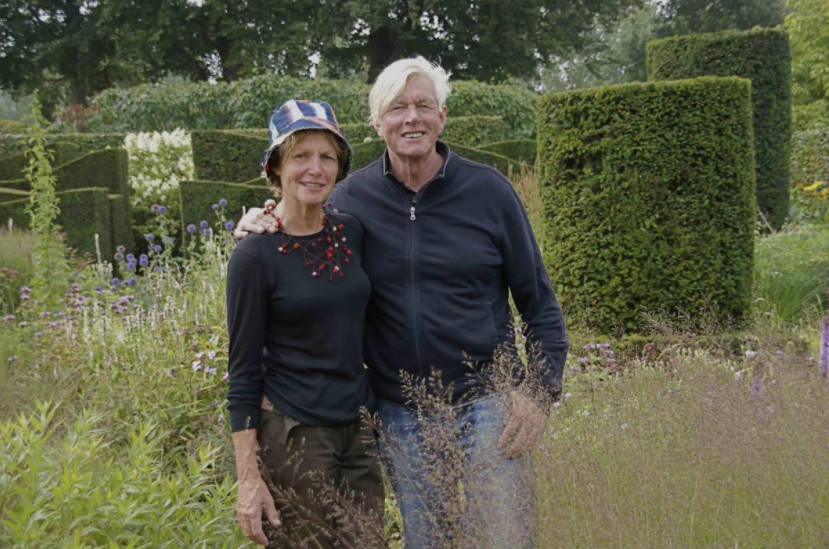
“The English garden has nothing to do with ecology – it requires constant care. He dictates what to do every minute of every day, every week.”
To experiment with landscape forms and selection, Piet with his wife Ani move to the countryside Hummelo.
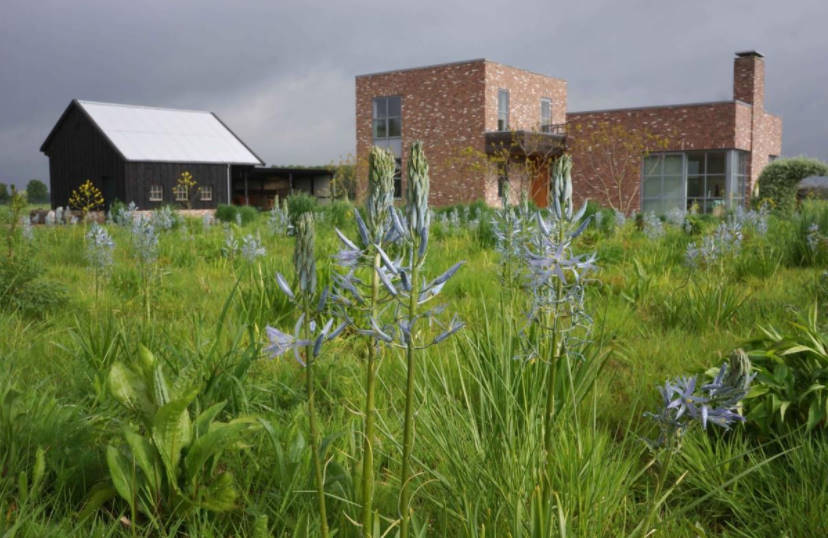
The result of these experiments was a completely clear concept of a new wave garden (we will talk about it later) and more than 70 bred varieties of plants, including the famous sage Dear Anja, named Oudolf in honor of his beloved wife, and the letter Hummelo — in honor of the place where they lived for a long time.
To date, 72-year-old designer has an impressive portfolio of projects and awards:
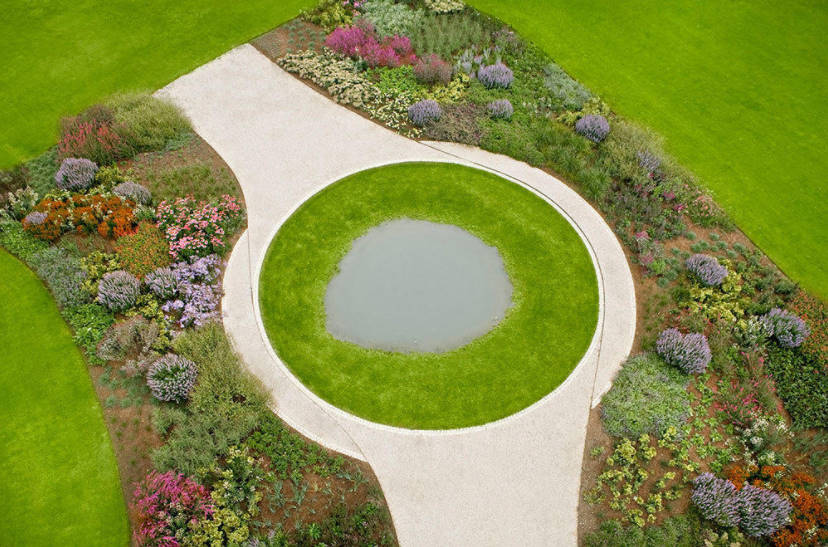
- work with Mien Ruys (esteemed ladies in the circles of the Dutch landscape design),
- design of Millennium Park in Chicago together with Jacqueline van der Kloot,
- garden temporary pavilion for London’s Serpentine gallery,
- The garden of Remembrance in Battery Park in Manhattan,
- high Line promenade in new York city and many more interesting and noteworthy gardens;
Piet Oudolf-laureate of the European Garden Award, honorary member of RIBA, etc.
The main provisions of the concept of the garden
Oudolf’s garden (which is a term more and more often slips on the Internet and in publications on landscape design) at first glance chaotic. As if itself has grown and continues to grow. In fact, it is clearly built and concept. Here are a few basic provisions on which Piet builds his gardens.
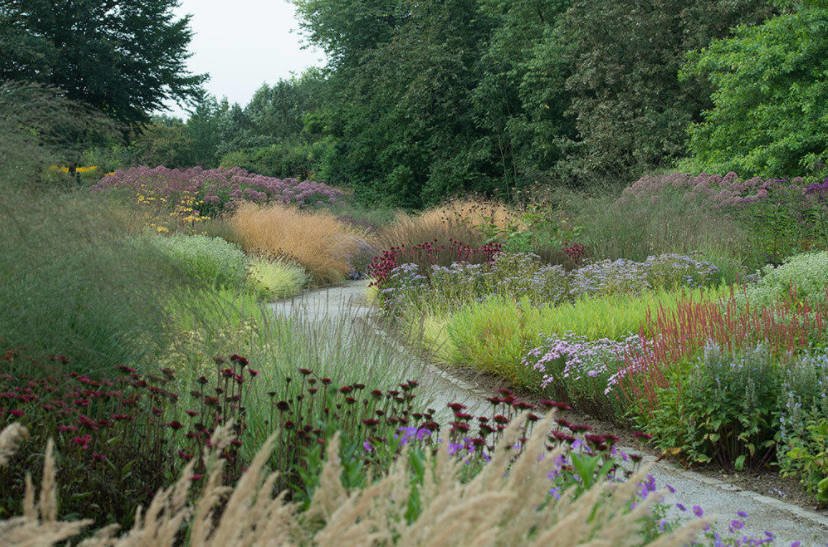
1. First of all, work with forms of plants should be carried out
It is necessary to fully use all the “architectural” features of a particular type. In this regard, Piet has identified several groups of plants:
- Spherical shape
As the name implies, these are plants with spherical inflorescences. Their goal-to peek out of the greenery, “play” in the setting sun.
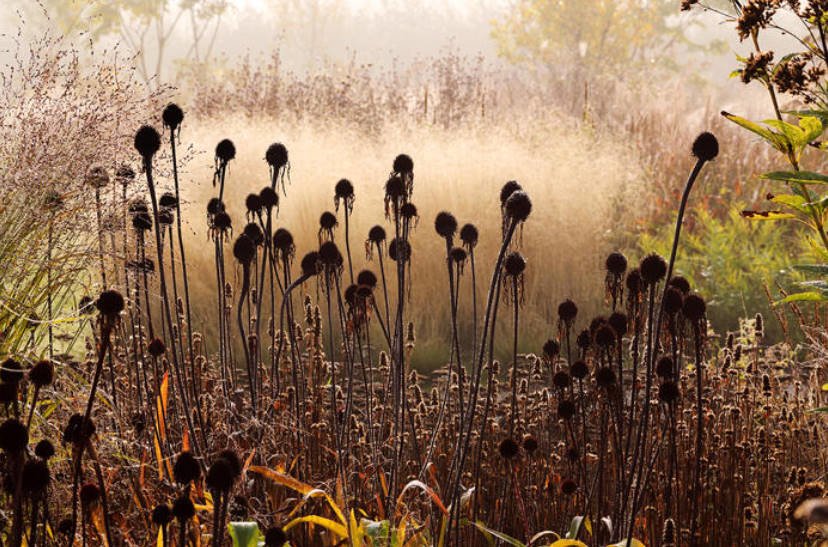
The designer recommends to use Knautia macedonica, Monarda didyma, Sanguisorba officinalis, etc. But his favourite is the Echinops with small blue flowers, gathered into a ball, and spiny leaves.
- Pointed shape (“candles»)
Inflorescences are narrow, directed upwards, resembling Gothic spires. Among them: Digitalis, Salvia, vertical grains, Veronicastrum virginicum and Lythrum.

- Umbrella shape
Everything is simple inflorescences like umbels, and most are associated with wildlife, which is not touched by the hand of the breeder. Achillea, Angelica and, of course, all the familiar fennel, lovage and porridge.
- Screens
Translucent plants with non-bright texture. They are called to smooth, soften paints of the “neighbors”. Again, grasses (e.g., Stipa), some types of Thalictrum, Rúta graveólens and Verbéna.
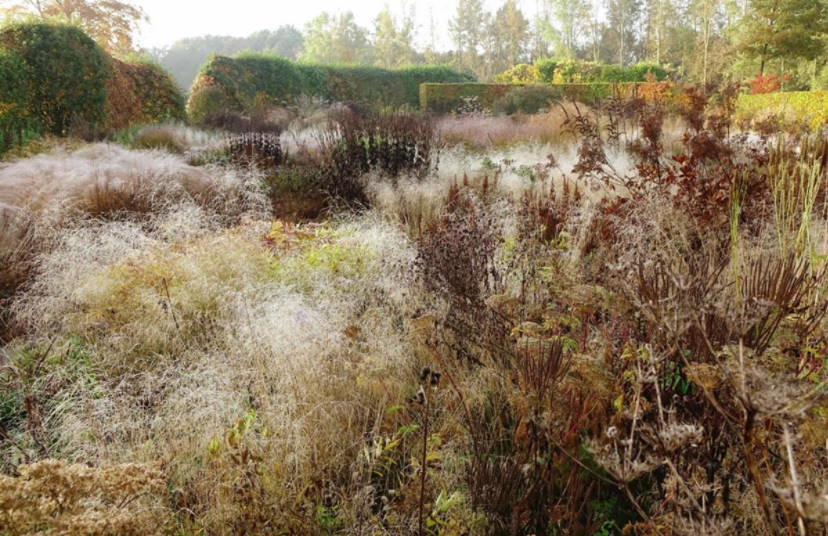
- Chamomiles
Under this concept, Piet combined all the plants that have inflorescences-sun, like daisies: Echinacea, as well as new England or new Zealand asters.
- Panicles and feathers
Here, too, the name speaks for itself. In this group, Mr. Oudolf placed plants with soft forms, like feathers or panicles.

Favorite of Piet – astilba and Filipéndula ulmária and other plants of similar texture.
2. The garden should be beautiful all year round
The perfect garden of Piet Oudolf – “the garden of four seasons”. He considers it impracticable to walk in the garden with a secateur and cut off what has already bloomed so that unnecessary inflorescences and twigs do not spoil the overall picture. Everything needs to be involved.

Therefore, the designer prefers planting plants of different flowering periods according to the following (approximate) formula:
- 30% — blooming in spring,
- 40% – flowering in summer,
- A 25% flowering in autumn,
- and the rest falls on the winter “jewelry”. After all, the garden in late autumn and winter is no less beautiful.
Interesting: the surest way to check if a garden is good is to take a black and white photo of it. Here is an interesting view from Piet Oudolf. If in this photo the garden looks “nice”, then everything is done correctly.
3. The rule of “70 to 30»
According to him, Piet divides all plants into structure-forming and fillers. Structure-forming can bloom until late autumn-they are the main in the garden. But the fillers have a short flowering period.
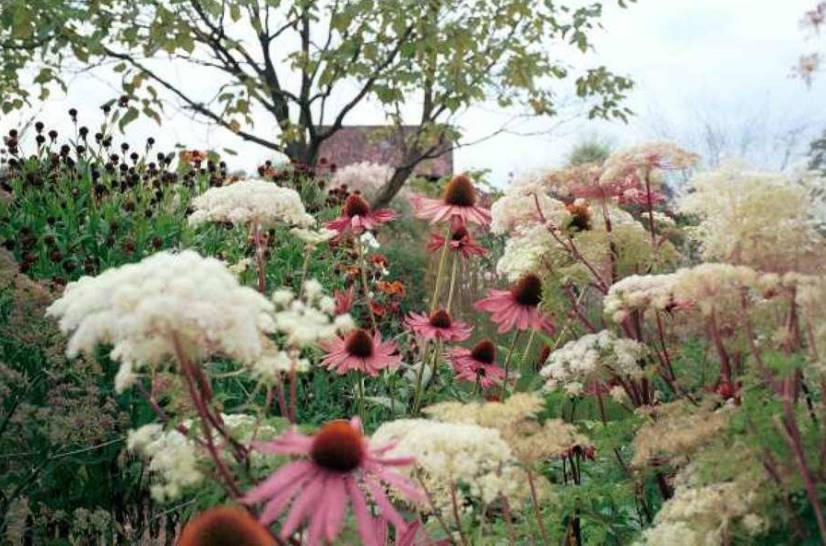
Simply put, the basis – a cold-resistant perennials and grasses, and jewelry (though short) – annuals.
4. The rule of the “pie»
Another interesting idea of the master. It offers to compare the garden with the cake. It would seem, strangely, that may be General in gardening and cooking?! To understand this rule, remember that you need any owner to pie (or cake, whatever you like) managed? First, it is the dough, which in the baking process takes a certain form, and secondly-decoration (confectionery toppings, nuts, candied fruits, cream roses, etc.), without which the cake is not a cake, and not a cake.
Garden same – each garden and flower beds, there is a basis (dough) – in its capacity as the Oudolf proposes to use such a favorite cereal, and there are ornaments, plants with bright blossoms. They have to work in unison.
5. Plants are planted by levels
According to Oudolf, there may be two or three. On the ground – grass and low-growing plants, the second – the bushes, the third – highest trees.
6. Colors in the garden should not only be bright and ” tasty»
Rarely do you like dark yellow and brown shades in the garden, typical for late autumn. Dejectedly? Sadly? Something missing, compared to the summer riot of colors? And Piet Oudolf has a different opinion. There is nothing ugly in nature, each color has its charm. The designer does not see anything strange in the fact, to admire the faded leaves, wrinkled buds, bare branches. Such vision he learned from the philosophy of Hank Gerritsen. Fades color, but remains form of. Therefore, it is necessary to plant something that will not lose its attractive shape after the flowers and leaves fly around.

“You accept death. You don’t take the plants out of the garden because even the dying ones look good. And brown, too, color.
7. There is nothing wrong with the collision of nature and the metropolis
Skyscrapers and ” sea ” rustling grasses – why not?! Piet Oudolf is a big fan of incorporating naturgarden into the urban landscape. One of the striking examples of such a strange neighborhood – soaring Park promenade High Line in Manhattan.

An abandoned railway line running at an altitude of about 10 m was last operated in 1980. In 2014 all works on its wonderful transformation into a promenade with a length of more than 2 kilometers were finished. Pete Rudolph sought to create the impression that nature comes to town and conquers the territory. Therefore, the ties and rails do not remove the steel between them were planted with flowers and herbs. The plants were selected according to the time of flowering. Therefore, the colors and textures in the Park are constantly changing.
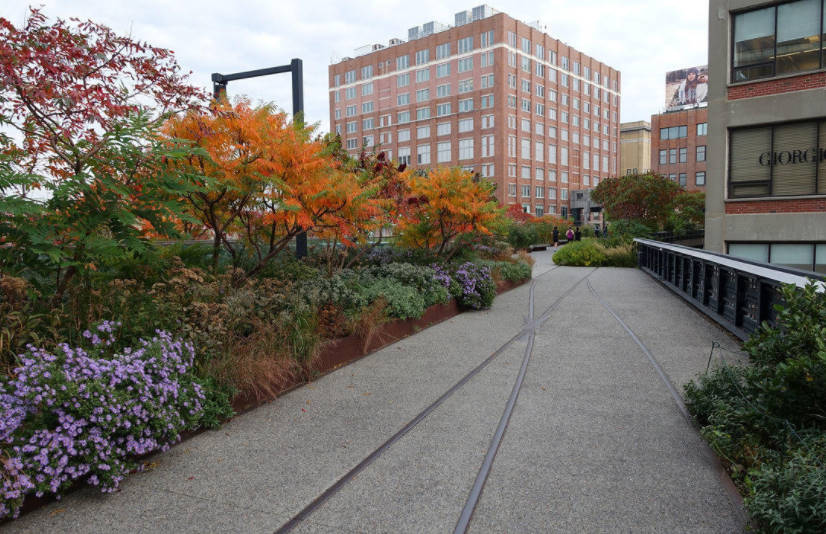
These are just a few facts about Oudolf’s gardens. In fact, a separate discussion deserve many of the Piet’s ideas, which as we all know, one post does not fit. Therefore I propose a selection of books Piet Oudolf, in which the designer first person presents their point of view.
Piet Oudolf’s books on landscape design
1. “Design plants”/”Designing With Plants”, 1999 the Story of form, color and textures. Particular attention should be paid to the chapters “Great” and “Mysticism”.
2. “Herb gardens”/”Gardening With Grasses”, 1998 we are Talking about gardening with active herbs.
3. “Gardens in time and space”/”Planting Design: Gardens in time and Space”, 2005 Addressed issues of soil preparation for planting, plant selection and subsequent care.
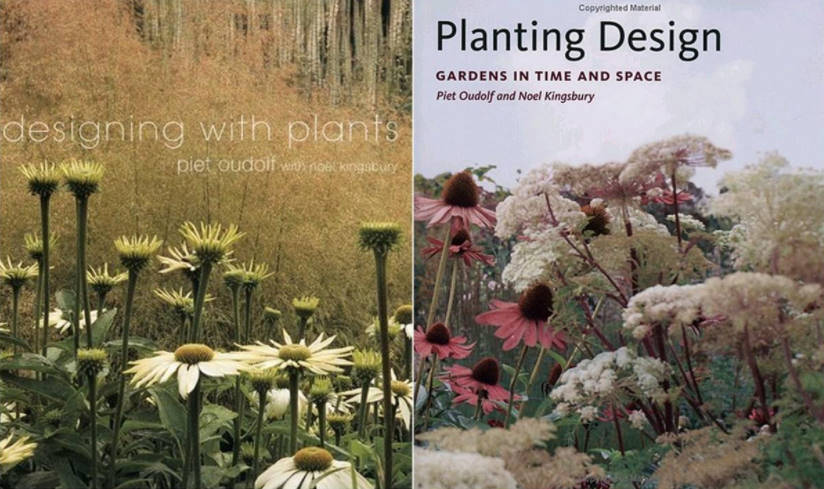
4. “Dream plants for the natural garden”/”Dream Plants for the Natural Garden”, 2000 presentation of the theory and practice landings.
5. “Creating a natural garden”/”Planting the Natural Garden”, 2003 All about creating a natural garden.
6. “Neues Gartendesign myth Stauden und Grarsern”. Description of the project “Gardens of Memories in The Battery” in new York.
Well, what do you think of Piet’s philosophy, which pushes the color into the background, giving the main role of texture and shape?
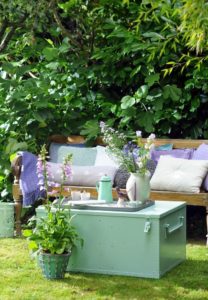



Leave a Reply